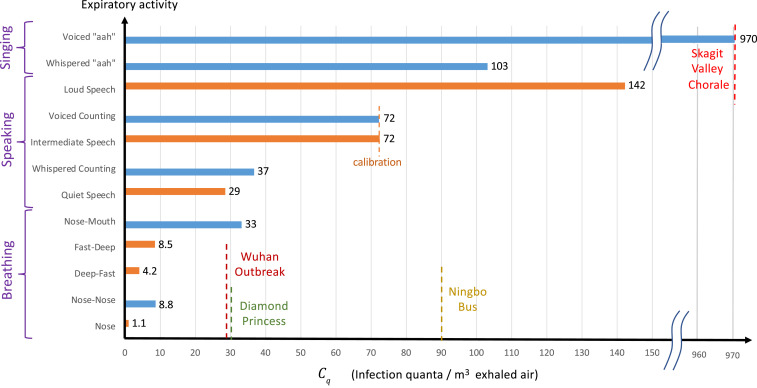Fig. 2.
Estimates of the “infectiousness” of exhaled air, , defined as the peak concentration of COVID-19 infection quanta in the breath of an infected person, for various respiratory activities. Values are deduced from the drop size distributions reported by Morawska et al. (11) (blue bars) and Asadi et al. (39) (orange bars). The only value reported in the epidemiological literature, quanta/, was estimated (25) for the Skagit Valley Chorale superspreading event (27), which we take as a baseline case () of elderly individuals exposed to the original strain of SARS-CoV-2. This value is rescaled by the predicted infectious aerosol volume fractions, , obtained by integrating the steady-state size distributions reported in Fig. 1 for different expiratory activities (11). Aerosol volume fractions calculated for various respiratory activities from figure 5 of Asadi et al. (39) are rescaled so that the value quanta/ for “intermediate speaking” matches that inferred from Morawska et al.’s (11) for “voiced counting.” Estimates of for the outbreaks during the quarantine period of the Diamond Princess (26) and the Ningbo bus journey (28), as well as the initial outbreak in Wuhan City (2, 81), are also shown (see SI Appendix for details).

